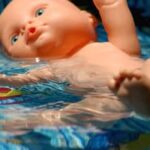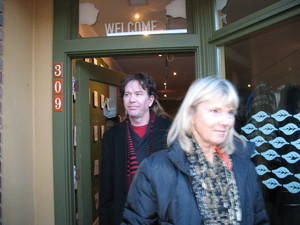Thanks to the age of technology, more heart attack victims are becoming heart attack survivors.
A decade ago, heart attack victims did not have a high survival rate due to the fact that CPR alone was not enough to resuscitate the patient while waiting for the paramedics. Each year in the United States alone, an estimated 350,000 victims die from sudden cardiac arrest (SCA) – nearly 1,000 people each day – often because lifesaving defibrillation does not reach them in time. Each minute of delay decreases an SCA victim’s chance of survival by 10 percent. After only ten minutes, more than 90 percent of SCA victims will die if they have not been defibrillated.
In 1997, automatic external cardiac defibrillators (AEDs) were developed for use in businesses and on airlines to prevent this tragedy from occurring. AEDs are smaller-sized defibrillators that send electrical shocks to the heart, like the ones seen on the television show ER. Studies show that survival rates over 75 percent can be achieved if an AED is used in the first three minutes after cardiac arrest. Over the last ten years, AEDs have been made available to more and more public places, including parks, golf courses, businesses, residential areas, churches and schools.
Altra Medical is one company that provides AEDs to the public. Located in the Tampa Bay, Florida area, Altra Medical has been providing AEDs to businesses and schools since 2001. Employees of Altra Medical have been working on getting the word out of the importance for businesses to have AEDs accessible to their employees and patrons.
We will do direct contact, direct mail, or phone contact people that we think are in businesses or that have facilities that would be likely candidates,” said Leslie Littell, President of Altra Medical. “For example, facilities that have over 200 people would likely have a cardiac arrest once in five years. Sports facilities and health clubs are places where the heart is stressed. Those are likely places to put them.”
Since the development of AEDs, the American Heart Association (AHA) has developed programs in correlation with CPR classes to teach people how to use AEDs. In 2005, the AHA developed new guidelines to update the use of both CPR and AEDs. The biggest change is the chest compression to breaths. The AHA 2005 guidelines state that “for the first time, a universal compression-ventilation ratio (30:2) is recommended for all single rescuers of infant, child and adult victims (excluding newborns).”
Lattimer said the shock sequence has also been updated. The guidelines now state to deliver CPR, deliver a shock, allow for recovery and start again. All AEDs are now programmed differently to comply with this and old ones are being updated to comply with the guidelines.
“We’re working with all of our clients to get them all updated and retrain them,” said Lattimer of the AEDs they’ve sold before the 2005 AHA updates.
Another advancement Altra Medical has made is to use Philips brand AEDs, which were developed in 2003. Lattimer said that Philips was the first AED supplier to do CPR coaching; provide newer AEDs that are smaller, weigh less, are easier to use and less expensive; and the first to sell for home use.
“You can get a home unit for about $1200-$1275,” she said. “(The new AEDs) makes it easier for lay responders to use them. They’ve been great.”
Lattimer also said that Philips was the first company to develop pediatric pads for the AEDs and provide them to all the other vendors.
“There are between 5,000 – 7,000 children that die from SCA,” Lattimer said, which makes this new advancement a necessity.
“Another advancement is technology Philips has developed called ‘quickshock,'” Lattimer continued. “(The machines) were taking a long time to read the rhythm and send a shock. Philips can send a shock in eight seconds as opposed to 30 seconds that others do.”
Philips has sold about 370,000 AEDs. Lattimer said they are the world leader and have sold more than any other company.
“(The use for AEDs has) broadened beyond airports now,” Lattimer said. “Many states have mandated them for schools. Florida requires them for all of their schools that participate in the Florida Athletic Association (in high schools).”
Almost every state has some kind of program set up to have AEDs available at public schools. In 1999, Project ADAM was developed in Wisconsin in name of Adam Lemel, one of three high school athletes who collapsed and died playing competitive sports. On April 16, 2000, Matt Bostic, a Boca Ciega High School student in Pinellas County, Florida died of cardiac arrest at a track and field event. After a giant fundraiser held in Matt’s name raised $9,000, his mother, Patty Latimer, decided to use the funds to research SCAs and contacted the American Heart Association.
Latimer learned of Littell and Altra Medical. Boca Ciega got things lined up to have an AED available at the school and do the training for those who were going to use it, including teachers, staff members and members of the athletic department such as coaches and the athletic trainer who goes to the events.
Following Adam Lemel’s death in Wisconsin, David Ellis, a longtime friend, initiated the effort to start public access defibrillation (PAD) programs at high schools throughout Wisconsin. Public access refers to accessibility for trained users to use AEDs in public places. It does not mean that any member of the public witnessing an SCA should be able to use the device.
In correlation with the program Ellis started, Children’s Hospital of Wisconsin began planning an effort to bring PAD programs to schools. The shared vision of David and Children’s Hospital is to have PAD programs in every Wisconsin high school. With the assistance of a number of organizations, that vision is becoming a reality.
Polk and Pasco Counties, Florida have PAD programs to put AEDs on county buses and in parks.
“Parks and recreation facilities are supposed to have defibrillators in them,” said Lattimer. “American Heart continues to do a lot of fundraising for those programs.”
Since the development of AEDs, many high schools have started to have AED training in correlation with the CPR part of health class. It became a graduation requirement in all sixteen Pinellas County, Florida high schools.
A crucial factor in the safety and performance of an AED is the device’s ability to accurately assess the patient’s heart and make an appropriate therapy decision. The defibrillator performs this evaluation by sensing electrical signals from the patient’s heart via electrodes and using a computerized algorithm to interpret the electrical signals.
“One of the technologies Philips has is smart CPR,” said Lattimer. “What that does is it will look at the patient’s rhythm and decide if you should start CPR first or shock the patient first. Medical studies are going on that show the longer a person is down, the heart benefits from doing CPR first. That’s some of the advances that have been built into the machines. It allows the machine to decide what should be done.”
AEDs guide users through the defibrillation process with verbal instructions. Defibrillation pads are placed on the victim’s bare chest in two places to allow the device to analyze the heart rhythm and determine if a shock is indicated. Diagrams on the pads indicate where on the chest to place them. If a shock is indicated, the device instructs the user to push the button to deliver the shock.
“You do have a physician that oversees the program,” said Littell.
The physician, or at least a medical director, will analyze the data card that is in the devices.
“Some companies want the EMS to do it,” Littell added. “But a lot of times the medical director will oversee the events.”
Many organizations, including the American Red Cross, now recognize defibrillation as the key to saving the life of an SCA victim and consider it as the next logical step in first aid. Doctors are supportive of AEDs being used in public places by everyday people who are trained to use them.
“I think it’s wonderful,” said Dr. Jim Irwin, an electrophysiologist in Tampa, Florida. “I am in favor of it.”
Dr. Irwin treats patients who have abnormal heart rhythms. His work involves the use of implantable cardiac defibrillators (ICDs) and pacemakers.
“We sent one (AED) home with a patient after we removed her infected ICD to use until she could get a new one,” said Dr. Irwin.
Dr. Irwin said that CPR is good for keeping oxygen flowing to the brain until a defibrillator can be used, but that it’s the defibrillator that gets the heart back. AEDs have saved hundreds of lives, including more than 200 people on airlines.
There have been some wonderful success stories if you can get to one quickly,” said Littell.
Altra Medical offers many different Philips AED models for businesses, schools and homes on their website, along with CPR and AED training classes taught by the American Heart Association. Readers can visit their website at www.altramedical.com and view the available AEDs and CPR/AED classes.
It is important that more public places install AEDs. They are an important part of the chain of survival for people who suffer from sudden cardiac arrest. Incorporating the use of a defibrillator with CPR can save many lives. Due to the number of deaths from SCAs, public places, businesses and schools cannot afford to not install them in their facilities.



